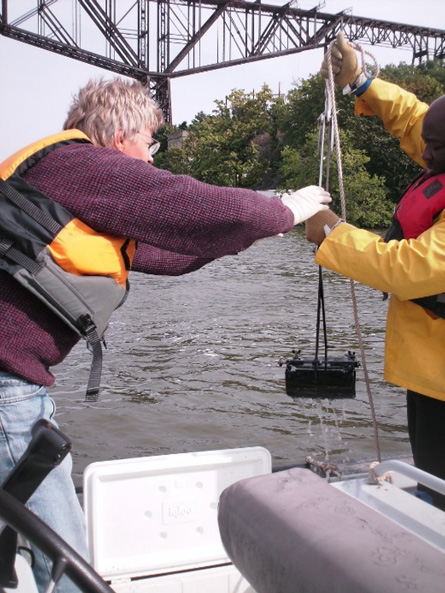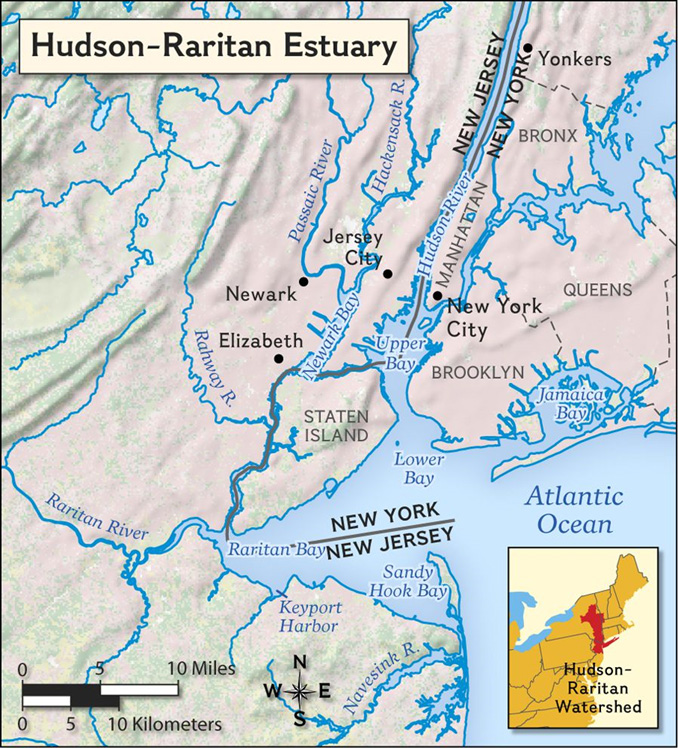In 2017, the New York–New Jersey Harbor and Estuary Program asked NCCOS’s National Status and Trends (NS&T) Program to survey the Hudson and Raritan Bays’ bottom sediments for chemical contaminants to compare results with a previous survey conducted in the same region 27 years earlier. The 1991/1992 surveys were part of a nationwide program supported by NOAA’s Coastal Ocean Program and the NS&T Program to survey chemical contaminants, and the biological effects of contaminants, in estuaries and bays.
Why We Care
Environmental stewardship is one of NOAA’s primary objectives. Chemical contaminants can adversely affect ecosystems and human health.
What We Are Doing
NOAA’s National Status and Trends Program surveys our nation’s coastal regions for chemical contamination.
What We Found
Dichlorodiphenyltrichloroethane (DDT), polychlorinated biphenyl (PCB), arsenic, cadmium, and silver had significantly lower concentrations throughout the Lower Hudson–Raritan Bay in 2018 when compared to 1991. Even with the overall reductions in concentrations, some analytes measured in 2018 remain at toxic levels in sediments in Hudson–Raritan Bay sediments. These analytes include DDT, polycyclic aromatic hydrocarbon (PAH), PCB, and mercury.


Benefits of Our Work
Mitigation and clean-up efforts by many organizations, such as the New York–New Jersey Harbor and Estuary Program, have improved sediment quality. The New Jersey/New York area is one of the nation’s major industrial and high density urban regions. The significant reduction in chemical contaminants in the Hudson–Raritan estuary is a testament to the success of these organizations and provides encouragement for other regions.
Next Steps
When requested, NOAA will continue monitoring sediment quality in collaboration with local mitigation efforts.
